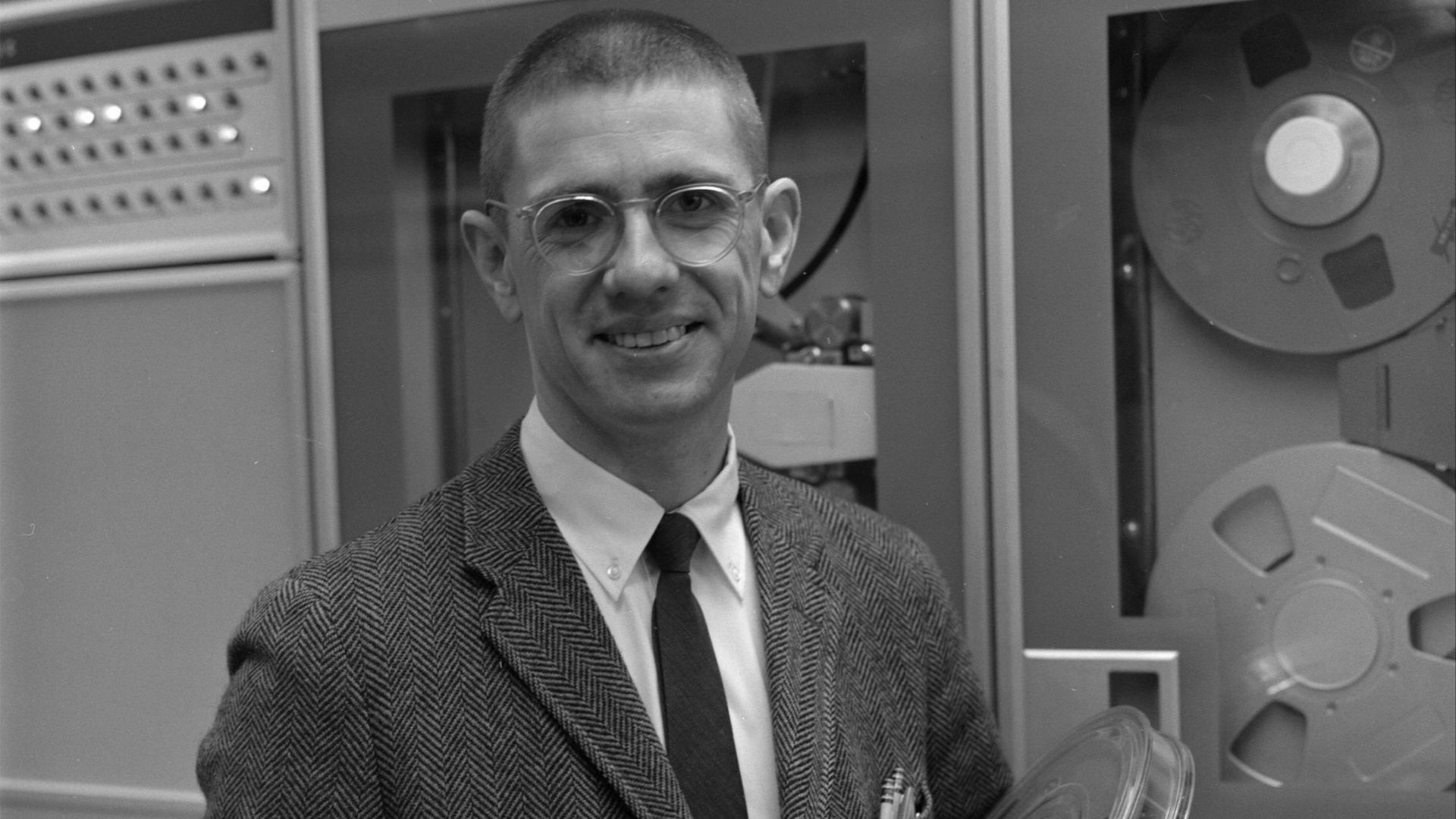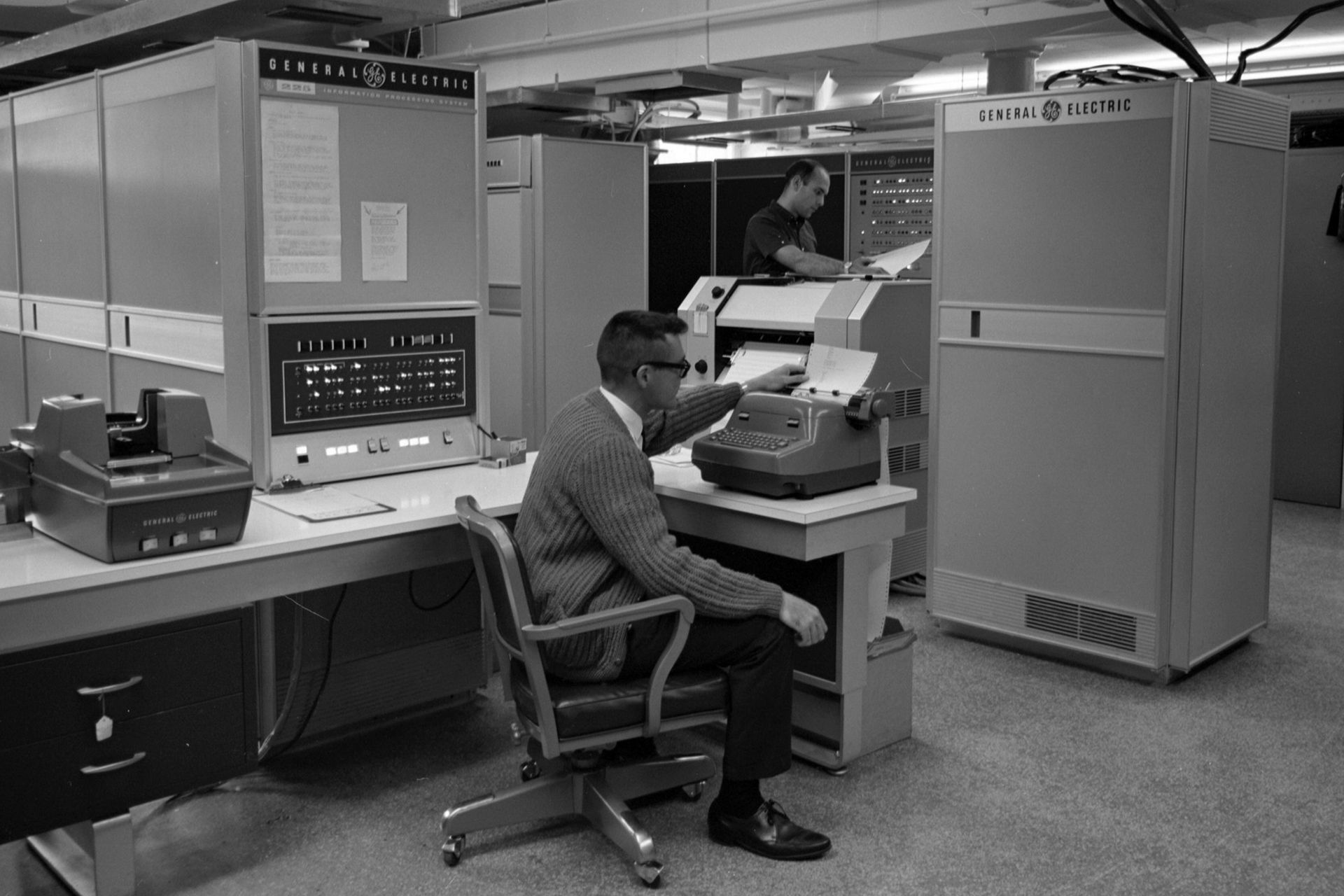尊敬的用户您好,这是来自FT中文网的温馨提示:如您对更多FT中文网的内容感兴趣,请在苹果应用商店或谷歌应用市场搜索“FT中文网”,下载FT中文网的官方应用。


At the start of the 1960s, when most computers occupied an entire room, the world’s programmers could barely fill a baseball stadium. Only a few thousand specialists could wrangle arcane coding languages such as Fortran and Cobol, and the unwieldy mainframes they ran on.
20世纪60年代初,当大多数计算机占据整个房间时,全球的程序员几乎无法填满一个棒球场。只有几千名专家能够驾驭像Fortran和Cobol这样晦涩的编码语言,以及它们运行的笨重大型机。
By the mid-1970s, there were millions of programmers. Computing’s first step into the mainstream was driven by the work of Thomas Kurtz, who died this month at the age of 96, and his fellow Dartmouth College professor John Kemeny. In 1964, the pair created a simple, fast and intuitive programming language called Basic. “It was the first effort in the history of computing to try to bring computing . . . to the masses,” he recalled in a 2014 documentary.
到20世纪70年代中期,程序员的数量已达数百万。计算机进入主流的第一步是由托马斯•库尔茨和他的达特茅斯学院(Dartmouth College)同事约翰•凯门尼(John Kemeny)推动的。库尔茨本月去世,享年96岁。1964年,这两位创造了一种名为Basic的简单、快速且直观的编程语言。他在2014年的一部纪录片中回忆道:“这是计算机史上第一次尝试将计算机带给大众的努力。”
“All of us who have written code in the past 60 years can thank Thomas Kurtz,” said Bill Gates, Microsoft’s co-founder, who as a teenager created his first computer program in Basic and launched Microsoft in 1975 with a version of Basic for microcomputers. “In the 1960s, when computers were massive, expensive and only available to scientists, he believed everyone should have access.”
微软联合创始人比尔•盖茨(Bill Gates)说:“我们所有在过去60年中编写过代码的人都应该感谢托马斯•库尔茨。”他在十几岁时就用Basic创建了自己的第一个计算机程序,并于1975年推出了微软公司,其Basic版本适用于微型计算机。“在20世纪60年代,计算机体积庞大、价格昂贵,而且只有科学家才能使用,但他认为每个人都应该有机会使用计算机。”
From the start, Kurtz wanted to create a system that even humanities students at Dartmouth could use with just a couple of hours’ instruction. Basic — which stands for Beginner’s All-Purpose Symbolic Instruction Code — replaced the inscrutable commands of other coding languages with ordinary English words such as “LET”, “IF” and “THEN”.
从一开始,库尔茨就想创建一个系统,即使是达特茅斯学院的人文学科学生也只需几个小时的指导就能使用。BASIC(初学者通用符号指令代码)用普通英语单词如“LET”、“IF”和“THEN”取代了其他编程语言中晦涩难懂的命令。
It was developed alongside another innovation by Kemeny and Kurtz called “time sharing”, which allowed several people to use a mainframe computer simultaneously. Together, these ideas paved the way for the personal computer revolution of the 1970s and 80s, as well as the cloud computing industry that followed decades later.
它是与凯门尼和库尔茨开发的另一项创新“分时”同时发展起来的,这项技术允许多人同时使用一台大型计算机。这些想法共同为20世纪70年代和80年代的个人电脑革命,以及几十年后随之而来的云计算行业铺平了道路。
Born in 1928 in the Chicago suburb of Oak Park, Kurtz trained as a mathematician, receiving his PhD from Princeton in 1956. That year, he was hired by Kemeny to teach maths at Dartmouth, where he would stay for nearly 40 years.
库尔茨于1928年出生在芝加哥郊区的奥克帕克,接受了数学家的培训,并于1956年从普林斯顿大学获得博士学位。同年,他被凯门尼聘请到达特茅斯学院教授数学,并在那里工作了将近40年。
When Dartmouth got its own computer in 1959, Kemeny and Kurtz wanted it to be something everyone on campus could use. MIT was already using the concept of time sharing for research: instead of “batch processing” each job in full, time-sharing systems ran multiple jobs for one second at a time. Kurtz’s insight was to tap this for educational purposes, which he said was a “completely nutty idea” at the time.
1959年,达特茅斯学院获得了自己的计算机。凯门尼和库尔茨希望它能成为校园内每个人都能使用的工具。麻省理工学院(MIT)已经在研究中使用了时间共享的概念:与其完全“批处理”每个作业,分时系统每次运行多个作业一秒钟。库尔茨的独到之处在于将其用于教育目的,他当时称之为“完全疯狂的想法”。
Dartmouth’s first computer wasn’t capable of running a time-sharing system but Kurtz and Kemeny started hand-coding one, recruiting undergraduates to help. Kurtz’s edict to the students was: “In all cases where there is a choice between simplicity and efficiency, simplicity is chosen.”
达特茅斯学院的第一台计算机无法运行分时系统,但库尔茨和凯门尼开始手工编写一个,并招募本科生协助。库尔茨对学生的指示是:“在所有情况下,如果要在简单和高效之间做出选择,就选择简单。”
If the Dartmouth time-sharing system was the forerunner of today’s operating systems, Basic was its first app. Its brilliance was in its instantaneity: a simple Basic program could produce a response in just a couple of seconds.
如果说达特茅斯分时系统是当今操作系统的先驱,那么Basic就是它的第一个应用程序。它的亮点在于即时性:一个简单的Basic程序只需几秒钟就能做出响应。


An early morning test on May 1 1964 proved that both systems worked, when two Basic programs ran simultaneously on Dartmouth’s new General Electric mainframe using time sharing. Kurtz soon hooked it up to teletype machines around campus, which could send messages to the mainframe and then print the responses. Hundreds of students were soon using it and the Dartmouth network was later extended to universities around the US, via telephone lines.
1964年5月1日清晨的一次测试证明了两个系统都能正常工作,当时两个基础四国程序利用分时技术在达特茅斯学院的新通用电气主机上同时运行。库尔茨很快将其连接到校园内的电传打字机上,这些打字机可以向主机发送信息,然后打印回复。数百名学生很快开始使用它,达特茅斯学院的网络后来通过电话线扩展到美国各地的大学。
“This notion of remote access, which predominates computing nowadays, aside from PCs . . . Tom was at the forefront of seeing where that was going to go,” says Stephen Garland, who met Kurtz while an undergraduate at Dartmouth and later became a professor there, steering development of the Dartmouth Time-Sharing System and Basic.
斯蒂芬•加兰(Stephen Garland)说:“除了个人电脑,这种远程访问的概念在当今的计算中占主导地位……汤姆站在了最前沿,他看到了这将走向何方。”加兰在达特茅斯大学读本科时遇到了库尔茨,后来成为那里的教授,主导了达特茅斯分时系统和Basic的开发。
Kurtz believed 5mn people already knew how to write Basic by the time Microsoft launched its version for the Altair 8800. Many more versions followed, including by IBM and UK computer-maker Acorn, whose BBC Basic was used in many British schools in the 1980s.
库尔茨相信,当微软推出针对Altair 8800的Basic版本时,已经有500万人会写Basic了。随后,IBM和英国计算机制造商Acorn等公司推出了更多版本,其BBC Basic在20世纪80年代被许多英国学校使用。
While Kemeny, who died in 1992, has been the better known of the two, Kurtz deserves recognition as an “equal partner”, according to Garland.
根据加兰的说法,虽然1992年去世的凯门尼在两人中更为知名,但库尔茨应当被视为“平等伙伴”。
The two professors foresaw that computing would be so widespread that universities needed to help their students understand it. “They realised that decisions would have to be made about computer use in society and it was better that large numbers of people understood what computing was,” said Garland, “so they were not taken in by jargon or the idea that the computer was always right.”
这两位教授预见到,计算机将普及,因此大学需要帮助学生了解计算机。加兰说:“他们意识到,必须就计算机在社会中的使用做出决定,最好让大量的人了解计算机是什么,这样他们就不会被行话或计算机总是正确的想法所迷惑。”